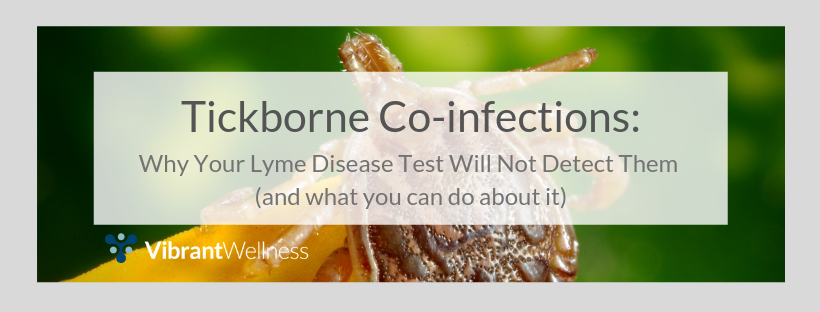10 Ways to Minimize PFAS Exposure
Few toxins have garnered as much attention regarding environmental health hazards as per- and polyfluoroalkyl substances (PFAS).
Known for their persistence in the environment and human bodies, these chemicals are associated with a range of potential health risks, including hormonal imbalances, immune system effects, and an increased risk of certain cancers.1
Originating from a variety of consumer products and industrial applications, PFAS pose a daunting threat to modern society.
In this article, we’ll provide 10 actionable strategies for minimizing PFAS exposure in daily life, plus advanced diagnostic tools to help you assess and manage this risk.
1. Understand PFAS Sources

The first step in minimizing exposure to PFAS is understanding where these pervasive chemicals can be found.
PFAS are toxins that are highly resistant to degradation and can build up and persist in the body for decades.2
PFAS exposure occurs directly from the environment through the air, water, and soil. Factories that produce consumer goods containing PFAS release the chemicals into the air during production, and the toxins then make their way into our water sources and landfills.
Thus, PFAS can end up in your water supply, food, and daily household products.
Understanding the ubiquity of PFAS is necessary for implementing effective avoidance strategies.
2. Pay Attention to Product Ingredients

To reduce your PFAS exposure, try replacing everyday contaminated items with alternatives.
Many products you use regularly may contain PFAS. They’re commonly used for their water and stain-resistant properties. You’ll find them in non-stick cookware, clothing, carpets, cosmetics, and more.
Switching to PFAS-free products can significantly reduce exposure. To make the switch, pay attention to the labels of the products you’re buying and look for the words “fluoro” or “perfluoro." You can also look for products labeled “PFAS-free.”
Some common swaps you can implement include replacing non-stick cookware with stainless steel or cast iron and swapping popular cosmetics, like lotion and makeup, for PFAS-free options.
3. Filter Your Drinking Water

The number one source of exposure to PFAS is contaminated drinking water.2
PFAS can easily enter our water supply through industrial waste, firefighting equipment, and the atmosphere.
Fortunately, you can mitigate PFAS exposure in water by installing water filters. The most effective filtering options, in order of reliability, include:
- Reverse Osmosis Filters: These are considered the most reliable for reducing short and long-chain PFAS, averaging to below detection levels for most compounds.3
- Dual-Stage, Under-the-Sink Filters: These filters, which include a pre-filter plus an activated carbon filter, are significantly helpful for short and long-chain PFAS and demonstrated similar effectiveness to reverse osmosis filters in one residential use study.3
- Single-Stage Activated Carbon Filters: Refrigerator, faucet, and pitcher filters. These filters can remove 50-70% of long-chain PFAS but are less effective at eliminating short-chain PFAS.3
A final option is whole-house filter systems. While less work than setting up individual filters throughout the home, these filtration systems are highly variable—some inadvertently re-deposit PFAS into filtered water, resulting in PFAS saturation (and higher levels). Thus, when buying a whole-house filtration system, purchase one tested for effectiveness.
4. Make Mindful Food Choices

Since so much of our daily lives revolve around food, making mindful food choices can greatly minimize PFAS exposure.
Various food sources may contain the chemicals due to environmental contamination and packaging materials, including:
- Seafood: Certain fish and shellfish can accumulate PFAS from contaminated water bodies. Pay attention to local advisories regarding fish safety and opt for seafood with lower PFAS levels, such as wild-caught salmon or tilapia.
- Packaged Foods: PFAS are commonly used in food packaging for their water and grease resistance, including in microwave popcorn bags, fast-food wrappers, and pizza boxes. From here, they can migrate into your food.
Choose Fresh and Organic When Possible:
- Fresh Produce: Opt for fresh fruits and vegetables over processed options. Fresh produce is less likely to be exposed to PFAS, especially if grown in uncontaminated soil.
- Organic Foods: Organic farming practices generally avoid the use of PFAS-containing sewage sludge as fertilizer. Choosing organic can reduce the risk of PFAS exposure from soil contamination.
Reduce Reliance on Packaged and Processed Foods:
- Home-Cooked Meals: Preparing meals at home from whole ingredients reduces reliance on packaged foods, decreasing PFAS exposure from packaging. It also allows for better control over what goes into your food.
- Alternatives to Processed Snacks: Seek out snacks that come in minimal or PFAS-free packaging, such as bulk nuts, fruits, or homemade treats. Many health food stores offer bulk sections where you can purchase food in reusable containers.
5. Remove PFAS From Your Home Environment

You can create a PFAS-minimized home environment by selecting furniture, carpets, and textiles made from natural materials or labeled as PFAS-free. PFAS are found primarily in stain- or water-resistant items.
Other household items that commonly contain PFAS include cleaning products. You can replace the conventional products with eco-friendly alternatives that are PFAS-free.
Additionally, managing dust in the household will reduce PFAS accumulation. Contaminated products can release PFAS into the air, allowing the chemicals to then settle as dust. To help reduce exposure, clean regularly with a HEPA filter vacuum.
6. Practice Awareness Outdoors
 PFAS are found in many outdoor products like water-repellent clothing, camping gear, and outdoor furniture due to their durability and resistance to the elements.
PFAS are found in many outdoor products like water-repellent clothing, camping gear, and outdoor furniture due to their durability and resistance to the elements.
To avoid these hidden exposure sources, opt for items made from natural materials or labeled PFAS-free.
When purchasing outdoor apparel, gear like tents, and furniture, prioritize products from brands that commit to eliminating PFAS from their manufacturing processes.
Additionally, choosing alternatives such as cotton, wool, or PFAS-free synthetic materials for clothing and gear can significantly reduce your contact with these substances.
Finally, it's helpful to be mindful of soil and water contamination in areas known for using firefighting foam, such as near airports and military bases. Community engagement in environmental monitoring can be beneficial.
7. Take Advantage of Helpful Resources

Checking resources like the Environmental Working Group databases for cosmetics and water purity can be especially useful for reducing overall PFAS exposure.
The cosmetics database allows you to search for popular brands of everyday products like makeup or skincare and view a score ranking their safety based on chemical content like PFAS.4
Additionally, the PFAS contamination interactive map allows you to see the level of PFAS contamination in your local water supply. This can guide prevention strategies and help you choose options that best suit your needs.5
You can also get involved with your local community to address PFAS pollution and advocate for stricter regulations and remediation efforts.
Participation in community meetings, support for policies that limit PFAS use and improve water treatment standards, and collaboration with environmental groups can amplify the impact of these movements.
8. Dispose of PFAS-Containing Items Properly

Properly disposing of items with PFAS is just as important as avoiding them in the first place.
Removing these products prevents further environmental contamination and reduces the spread of the chemicals.
When disposing of items containing PFAS, it's important to avoid throwing them in the trash, where they can end up in landfills and potentially leach PFAS into the soil and groundwater.
Instead, look for specialized recycling programs or hazardous waste disposal facilities equipped to handle PFAS-containing products.
Some manufacturers and retailers offer take-back programs for their products, ensuring safe disposal or recycling.
Additionally, contacting local environmental agencies or waste management services can provide guidance on the best disposal practices for PFAS-containing items in your area. By doing this, you can help minimize the environmental impact of PFAS and contribute to a healthier ecosystem.
9. Check Your PFAS Levels

To efficiently detect levels of PFAS in your body and get to the root of exposure, you can utilize precision testing like Vibrant’s PFAS Chemical Test.
The PFAS Chemical Test detects levels of the chemical metabolites in your body, enabling you to:
- Identify PFAS toxicity
- Uncover the root cause of environmentally induced toxicity
- Establish risk recognition
- Enable solutions and interventions that will enhance toxic substance elimination and promote healing
The PFAS Chemical panel utilizes mass spectrometry and liquid chromatography to detect and identify 21 short-chain and long-chain PFAS analytes commonly found in the human body.
The panel allows you to understand your toxin status and develop personalized strategies to reduce toxic exposure and lower overall toxic burden.
Check out Dr. Jill Carnahan’s break of the Vibrant PFAS Chemical Test to learn more:
10. Try Detoxification Strategies

A final method for reducing PFAS exposure is through detoxification strategies. Since it’s impossible to completely prevent exposure to these ubiquitous chemicals, implementing detox strategies can be extremely helpful in reducing levels of PFAS in your body.
You can do this by working with your healthcare provider to develop a nutrition plan that promotes detoxification. This involves focusing on foods that support the various phases of detoxification while avoiding those that can inhibit the process.
Antioxidants and fiber can support the body's natural detoxification processes. Foods high in antioxidants, such as berries, nuts, green leafy vegetables, and spices like turmeric, can help combat oxidative stress, while fiber-rich foods like whole grains, legumes, and vegetables aid in eliminating toxins through the digestive tract.
You find a customizable detoxification food plan here.
Additionally, staying well-hydrated with clean, filtered water and engaging in regular physical activity are also crucial for facilitating the removal of contaminants from the body.
Achieving Longevity in a Toxic World
Minimizing exposure to PFAS is a proactive step toward safeguarding your health in an increasingly contaminated world.
By being intentional about the products you surround yourself with and monitoring PFAS levels through precision testing, you can significantly reduce your PFAS burden, helping you achieve improved health and life span.
References:
- https://blog.vibrant-wellness.com/-decoding-pfas-how-forever-chemicals-affect-hormonal-balance
- https://blog.vibrant-wellness.com/introduction-to-pfas-chemicals
- https://www.youtube.com/watch?v=pipuyXMZ_MU&t=1261s
- Environmental Working Group. (2024). EWG Skin Deep® Cosmetics Database. Retrieved from https://www.ewg.org/skindeep/
-
Environmental Working Group. (2024). PFAS Contamination Crisis: New Data Show 5,021 Sites in 50 States. Retrieved from https://www.ewg.org/interactive-maps/pfas_contamination/map/
Regulatory Statement:
The general wellness test intended uses relate to sustaining or offering general improvement to functions associated with a general state of health while making reference to diseases or conditions. This test has been laboratory developed and its performance characteristics determined by Vibrant America LLC and Vibrant Genomics, a CLIA-certified and CAP-accredited laboratory performing the test. The lab tests referenced have not been cleared or approved by the U.S. Food and Drug Administration (FDA). Although FDA does not currently clear or approve laboratory-developed tests in the U.S., certification of the laboratory is required under CLIA to ensure the quality and validity of the tests.
 By
By


